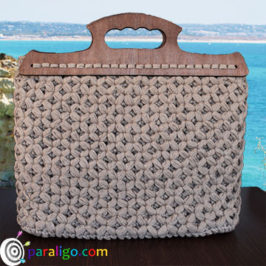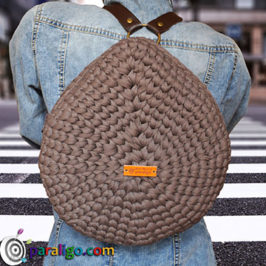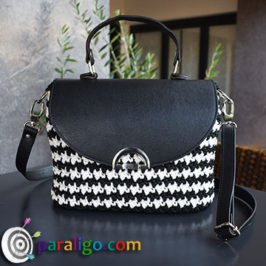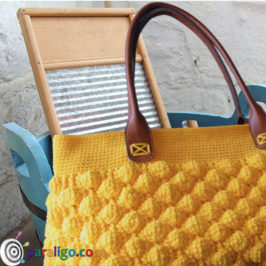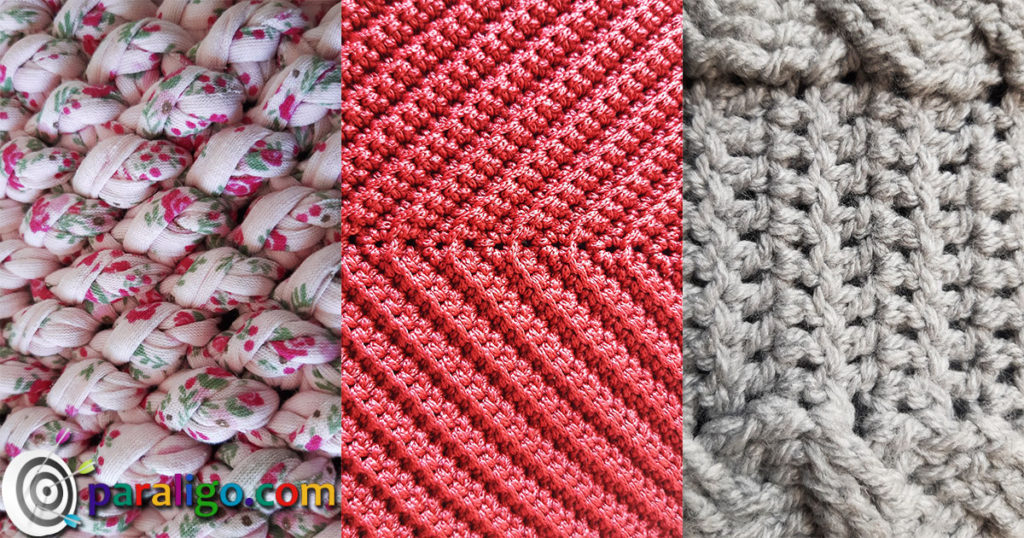 For the last couple of months, I‘ve been trying to create an inventory of stitches ideal for crochet bags. The first part of this catalog was dedicated to dense crochet stitches. If you missed my previous posts, click on the following links to find out about the waistcoat stitch, the canestro stitch, the single crochet camel stitch, the sailor’s knot stitch, the slanting waistcoat stitch, the frontal half double crochet, and the rattan single crochet.
For the last couple of months, I‘ve been trying to create an inventory of stitches ideal for crochet bags. The first part of this catalog was dedicated to dense crochet stitches. If you missed my previous posts, click on the following links to find out about the waistcoat stitch, the canestro stitch, the single crochet camel stitch, the sailor’s knot stitch, the slanting waistcoat stitch, the frontal half double crochet, and the rattan single crochet.
Before beginning the next chapter of this catalog of crochet stitches that are great for bags, I decided that it’s crucial to make an extended reference to one of the factors that define the quality not only of a stitch but also of an entire crochet project. And this is crochet tension.
Tension is literarily the key to the success of a crochet bag. Tension determines a clean shape and a nice form, it sets a rigid fabric that can hold its weight, and finally, it allows a stitch to reveal its full beauty. Tension also defines the size. And when it comes to bags that are comprised of two parts supposed to be identical tension is critical!
Crochet tension is commonly known to be the same as the crochet gauge. Many believe that tension is the UK word for what gauge means in the US. This is not entirely correct as there is a significant difference between these two terms.
What is crochet tension and what is a crochet gauge?
Crochet tension is a combination of the tightness of your grip on your crochet hook and yarn and the force applied by your body, that results in how loose or tight you work your stitches. Crochet gauge is the number of stitches and rows, included in a square of crochet fabric of a specific size. For example 10x10cm.
In other words, the crochet gauge is in essence a metric that helps us measure and access our tension. This metric is determined by the hook size, the type and weight of yarn you are using, and of course the intended rigidity. This rigidity varies depending on the type of the end item, the stitch, the yarn, and of course our personal preference.
Many crocheters like to work loose for aesthetic purposes but also due to health issues. This is because crocheting with a high tension can be extremely harmful to your hands and neck. Therefore when working on a crochet project tight it is crucial to take frequent breaks, and avoid crocheting for long periods within the day.
However, some projects demand a certain rigidity and when it comes to bags this is a very common thing. As mentioned before to determine how tight we want to work a crochet project we need to keep in mind the kind of stitch and type of yarn we use.
Some stitches are by definition dense and require minimum effort on our behalf. This is why I dedicated an entire chapter to them. On the other hand, many stitches can literarily go to waste if not worked loose and this usually applies to decorative stitches. Bubble stitch, puff stitch, and canestro are some of them.
Similarly, some types of yarn like T-shirt yarn, demand less tension than others to achieve a thick and rigid crochet fabric. You will find much information about this subject by clicking on the following links to my series of posts dedicated to T-shirt yarn, Ribbon Yarn, Macrame cords, Crochet thread, and the so-called Knitting yarn.
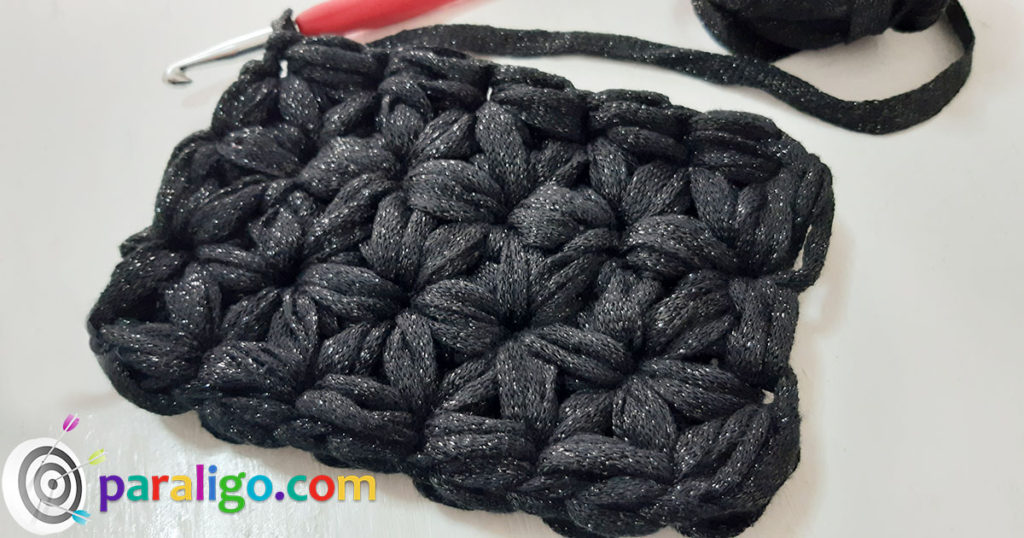
How do I know what is the right tension?
When the tension required for a pattern is crucial the gauge is mentioned in beginning. This applies often to crochet clothing but also to many other projects. On the flip side for crochet items like scarves, blankets, or baskets gauge is not a matter of life and death.
When the gauge is not listed in a pattern that you are about to try it is very helpful to ask yourself the following questions. Do I need my item to have a specific size, to fit a kiss lock frame for example? Will my project need to keep its form like for instance a macaroon bag? Does my stitch look good when worked tight or loose? Is my yarn thick and hard or soft and loose?
It’s also important to remember that tension is sensitive. It can be influenced by the way you are sitting, how tired you are, how stressed you are and of course by the degree of your experience and the speed at which you work. If you are feeling nervous it is more likely to crochet tightly. When you are crocheting in the late hours of the day it is very possible that your work will turn out loose.
It is very usual that your tension will get looser as you relax into making a project. Nevertheless, each crocheter works to their personal tension. Speed crocheters tend to work loose though this is not a rule. What is a rule is that you must check your tension before you begin a project, to avoid unraveling and straining your hands and neck over nothing.
How do I test a suggested gauge?
Work a square piece of crochet fabric a few cm bigger than the gauge dimension. Lay your square flat with the right side facing up and measure the space defined by the gauge (for example 10cm) by placing a ruler or a tape measure across to a row. There are also special gauge meters designed for this job but even a simple ruler will do. Mark the beginning and end of this space.

Then place the ruler or tape measure vertically to your rows and measure the defined height of the gauge (for example 10cm). Again mark the beginning and end of this space. Next count the number of stitches between the markers to have the total number of stitches and rows included within this square of 10cm.
For some patterns, you have to count the number of pattern repeats and not the number of stand-alone stitches in a square. Also, it is a good practice to block your sample before counting the stitches. To block your crochet sample just spray it with some water and then pin it on a flat surface to dry.
What if my sample doesn’t match the gauge?
If your stitches and rows are more than suggested, then your work is too tight which means that your tension is too high. One easy way to fix this to use one hook size bigger than the one recommended. Contrarily if your stitches and rows are less than suggested then your work and tension are too loose. In this case, you could try to use one hook size smaller than the one suggested.
In any case, it is wise to try different hook sizes with a smaller sample before actually starting your project. What you should also try is to change the way you hold your yarn. The single loop hold is guaranteed to allow you to work looser while the over and under hold is more helpful when you need tighter tension.



